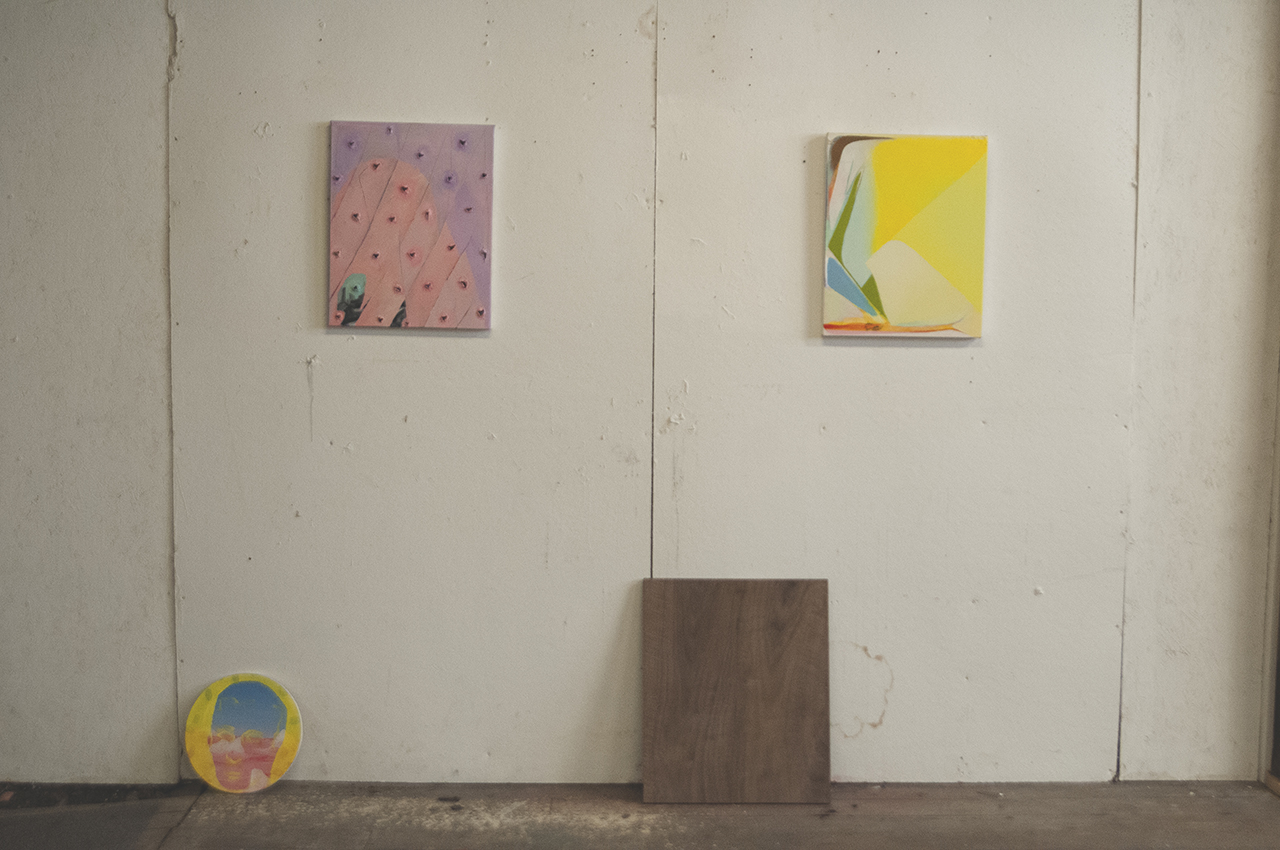Inside\Within is a constantly updating web archive devoted to physically exploring the creative spaces of Chicago's emerging and established artists.
Support for this project was provided by The Propeller Fund, a joint administrated grant from Threewalls and Gallery 400 at The University of Illinois at Chicago.

Search using the field below:
Or display posts from these tags:
3D printing 3D scanning 65 Grand 7/3 Split 8550 Ohio 96 ACRES A+D Gallery ACRE animation Art Institute of Chicago Arts Incubator Arts of Life audio blogging Brain Frame CAKE Carrie Secrist Gallery casting ceramics Chicago Artist Writers Chicago Artists Coalition Chicago Cultural Center Cleve Carney Art Gallery Clutch Gallery Cobalt Studio Coco River Fudge Street collage collection Columbia College Chicago Comfort Station comics conceptual art Contemporary Art Daily Corbett vs. Dempsey Creative Capital DCASE DePaul University design Devening Projects digital art Dock 6 Document drawing Duke University dye Elmhurst Art Museum EXPO Chicago Faber&Faber fashion fiber Field Museum film found objects GIF Graham Foundation graphic design Harold Washington College Hatch Hyde Park Art Center illustration Image File Press Imagists Important Projects ink installation International Museum of Surgical Science Iran Jane-Addams Hull House Museum jewelry Joan Flasch Artist's Book Collection Johalla Projects Julius Caesar Kavi Gupta Links Hall Lloyd Dobler LVL3 Mana Contemporary metalwork Millennium Park Minneapolis College of Art and Design Monique Meloche Museum of Contemporary Art Chicago (MCA) Museum of Contemporary Art Detroit (MOCAD) Museum of Contemporary Photography (MoCP) National Museum of Mexican Art (NMMA) National Resources Defense Council New Capital Northeastern Illinois University Northwestern University Ox-Bow painting paper mache Peanut Gallery peformance Peregrine Program performance photography PLHK poetry portraiture printmaking public art Public Collectors publications Renaissance Society risograph rituals Roman Susan Roots&Culture SAIC screen printing sculpture Sector 2337 Shane Campbell Silver Galleon Press Skowhegan Slow Smart Museum Soberscove Press social practice South of the Tracks Storefront SUB-MISSION Tan n' Loose Temporary Services Terrain Terrain Biennial text-based textile textiles The Banff Centre The Bindery Projects The Cultural Center The Franklin The Hills The Luminary The Packing Plant The Poetry Foundation The Poor Farm The School of the Art Institute of Chicago (SAIC) Threewalls Tracers Trinity College Trubble Club University of Chicago University of Illinois at Chicago (UIC) University of South Florida at Tampa Valerie Carberry Vermont Studio Center video weaving Western Exhibitions wood carving woodwork Yellow Book Yollocalli Arts Reach zinesInside\Within is produced in Chicago, IL.
Get in touch:
contactinsidewithin@gmail.com
Josh Dihle's Material Lust

Josh balances his practice through several mediums, allowing his 3D work to influence the content of his paintings and vice versa. Drawn to organic structures, Josh often incorporates this subject matter into his work, creating paintings with material ranging from mid-Atlantic plants called from memory to fossilized shark teeth imbedded into the canvas.
I\W: How does your 3D paper mâché work fit into your painting practice?
JD: These paper mâché masks, and a lot of the 3D work I make, I am never quite sure if it’s art. They are just these things I make and I decide later if they fit into an art context. For the masks I have been making, they ended up being the impetus for a video I made to introduce my painting show Inland Antic at Valerie Carberry. In this case, they are images that come from some of the paintings, and then I sometimes paint those images back into the paintings from the 3D. They are definitely in dialogue with the 2D work I make. It is another way of generating, or doodling in a three-dimensional way. They all come out of the same lust for material. If there is a day when I have been painting for five hours and I am tired of painting but I am not done making, I can shift that same energy into this other activity. I am still using my hands, and scratching my brain, but in a different way.
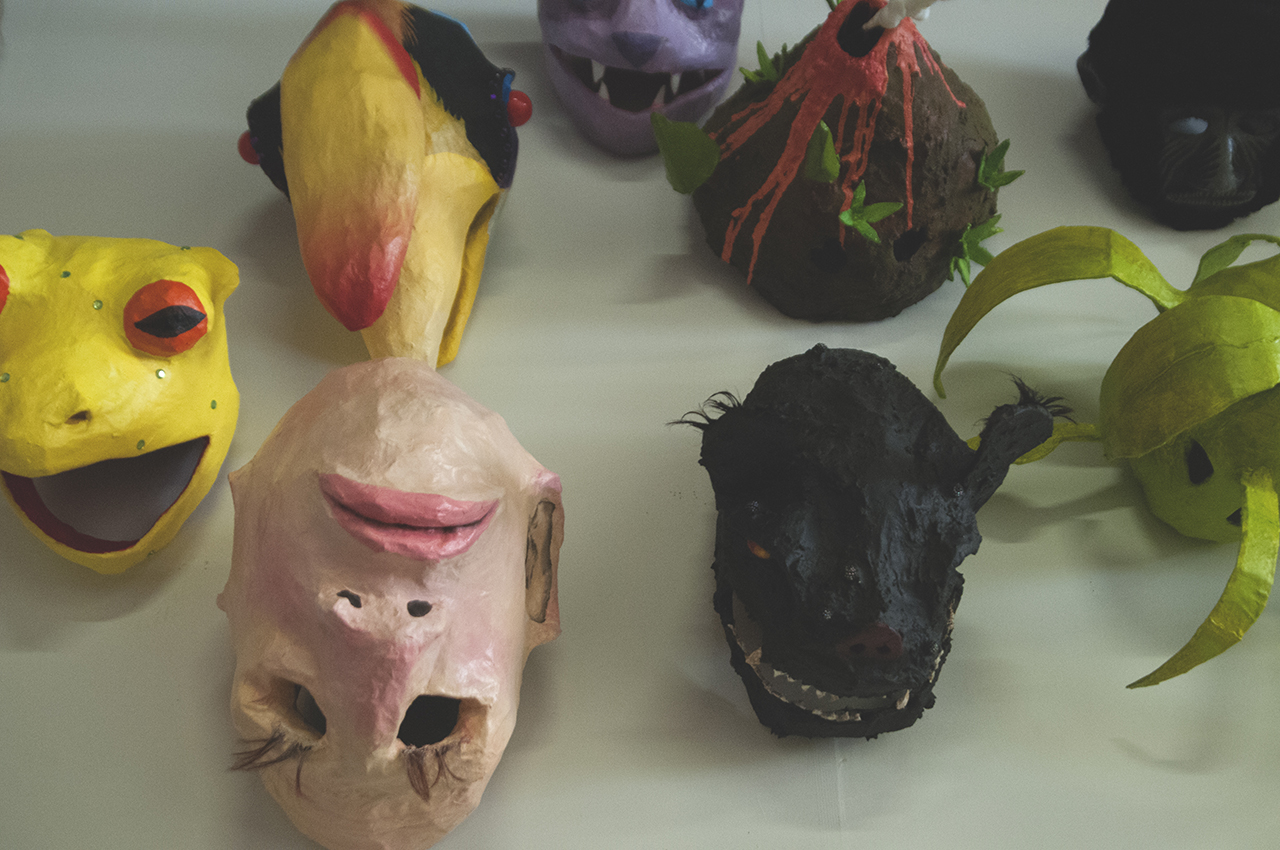
Are the masks almost like a cast of characters?
No, because I don’t use them in a narrative way, or don’t think of them in a narrative way. I don’t imbue them with humanistic qualities. Maybe their facial expressions relate to this, but I don’t think of them as having little bits of soul. Part of the impetus for making these was having something to make at home when it was too cold to go into my studio during the winter. There is a kind of domestic crafty side to it that I like.
How do you decide between utilizing wood or stretched canvas for your paintings?
For smaller, more detailed works, I want a hard surface so I can rest my hand on it. But I think a lot of it is just letting creative impulse play out in different kinds of muscle groups. There is fine, dexterous finger work and then there is forearm chisel work. There are different ways of working the material. I don’t have a lot of boundaries in my head when I am making work, it is just what’s next. I am rolling along. I have also been carving into the wood panels before I paint them, which is something I have only come across in the last year or so. It is almost like drawing, but I draw into the volume of the support—which I love. I am interested in fucking up the way a work looks to contradict the legibility of how it is made. I have a painted panel that has a heart carved into it and two sad faces. It is a landscape painting, but there is this other germ that is already inside of it.
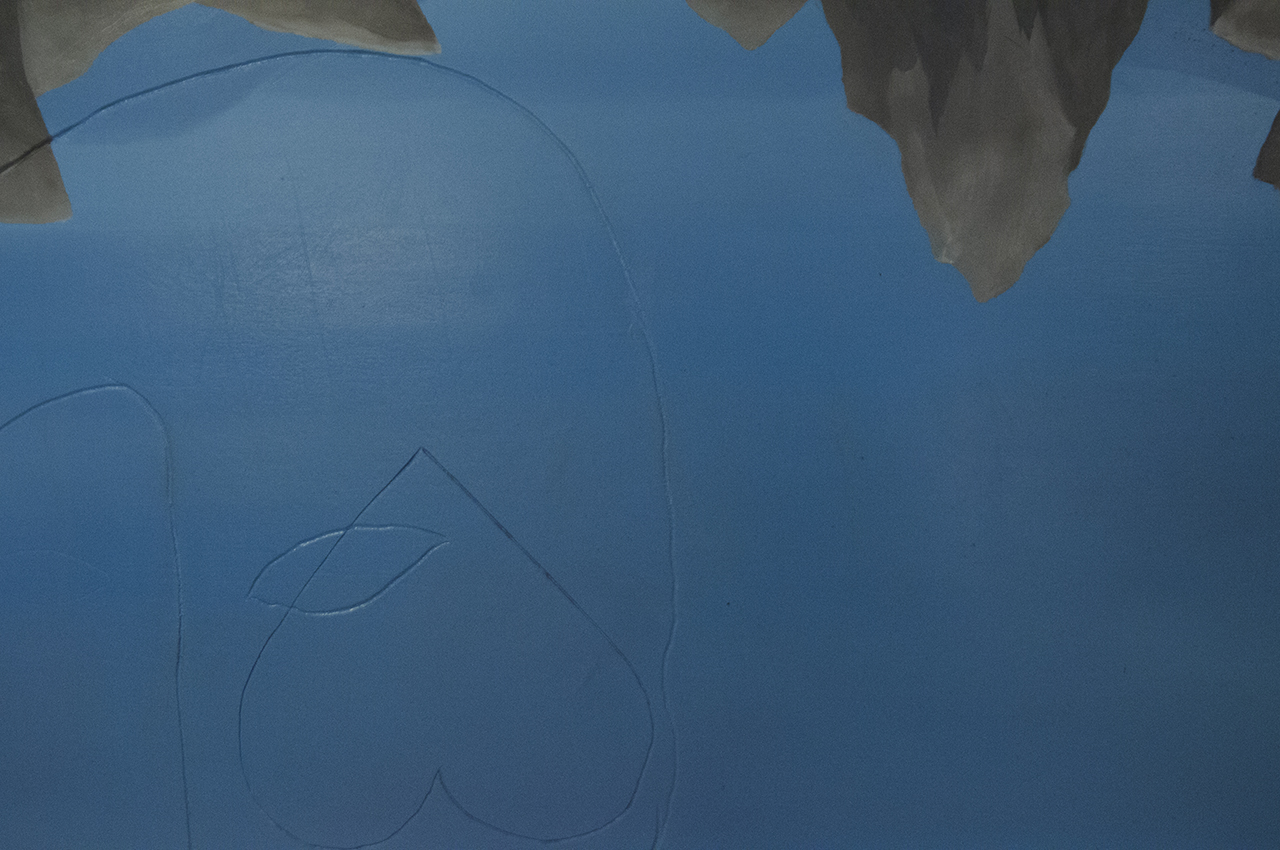
You paint lots and lots of plants. Is there a specific environment in which you like to place these pieces in your mind when you are making them?
Sort of, but not exactly. Everyone in my family is sort of a plant person. My dad has a degree in botany and my mom is a therapist and a gardener, so there is this mishmash of psychology and plants. I am a little specific about my plants because I am from the mid-Atlantic; they’re not palm trees. I make these forms up as I go. A lot of what I make are referenced from, say, memories I have from fishing on the Potomac River with my brother and what I remember of the thing that’s poking out from the rock next to me. They end up looking Cretaceous and primitive, but they are all made up. Maybe they are coming out of a deep psychological well, but I don’t have a concrete answer.
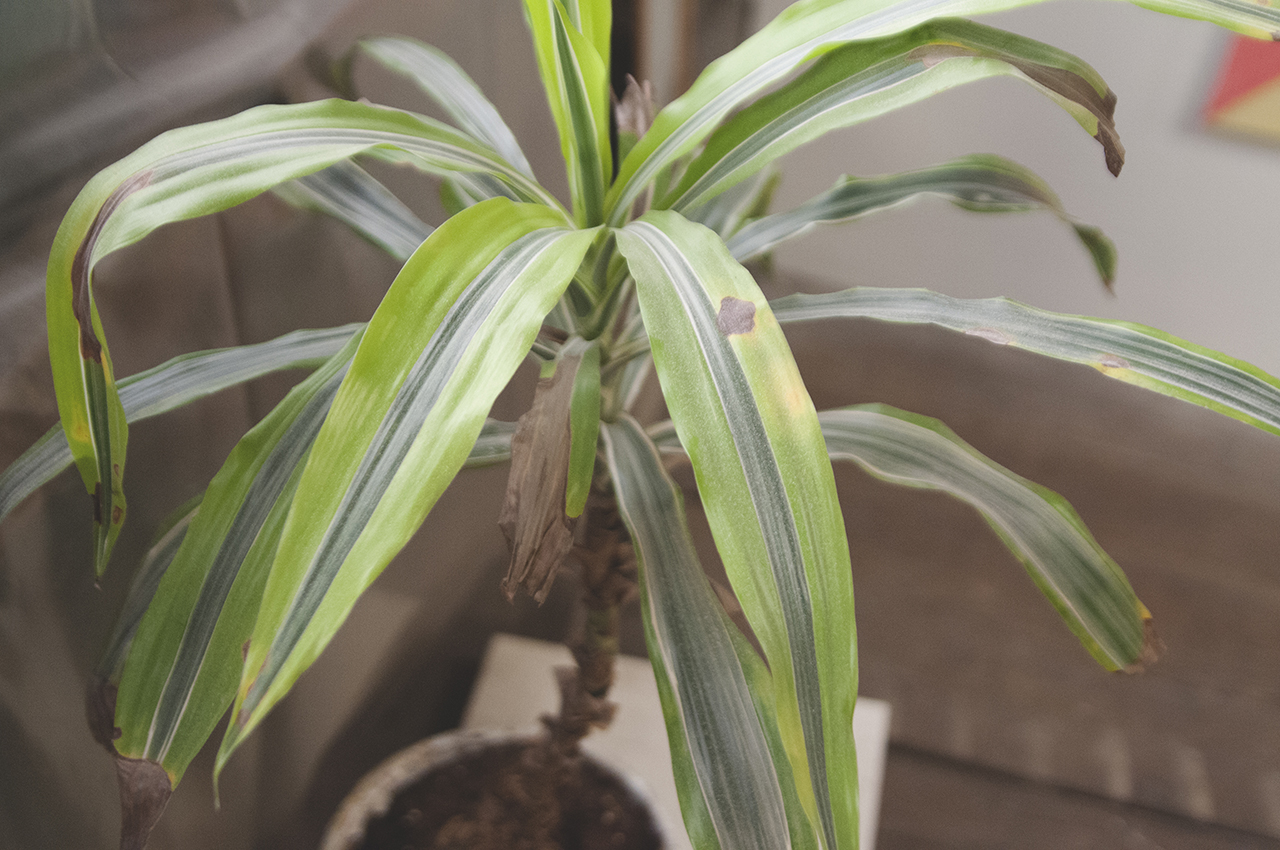
Are you still mixing found materials into your paintings?
I have an in-progress piece that is a store bought stretched linen with gobs of waxy oil paint and fossilized shark teeth that I shoved into the paint and painted back over. I love that the volumetric surface of the piece makes both positive and negative space. One of the last paintings in which I used this type of space I connected to William Faulkner’s As I Lay Dying. I called it “Say No More (Flowers for Vardaman).” Vardaman is a little boy in the book whose mother has died and he doesn’t understand that she is dead so he drills air holes into her coffin, which is this morbid thing if you consider what he is actually drilling into. It is the disconnect between painful life circumstance and the dumb logic of surfaces. I am painting black holes into these paintings because they speak to a dark undercurrent that I cannot fully grasp. It is hopeful, but painful at the same time.
Why the content of the fossilized shark teeth?
They are teeth that I collected on the beach as a little kid, so each one of them is a unit of searching and looking. It is almost like currency—here are several 20 minute segments of searching embedded into this thing. Somebody donated to me a bunch from their collection too, so I am also using others’ searched and accrued hours. I studied biology and I am interested in organic structures, and I like that these teeth are little flesh cutting machines.
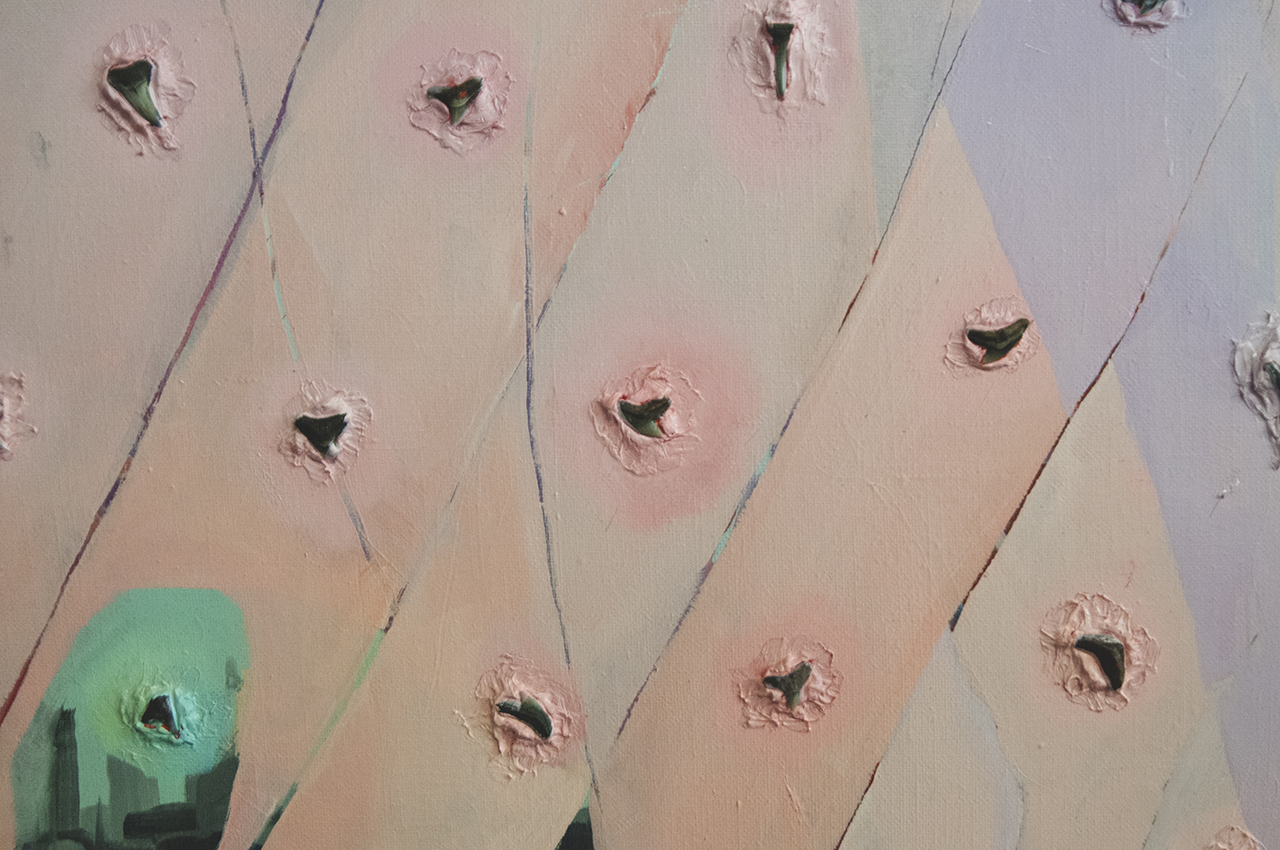
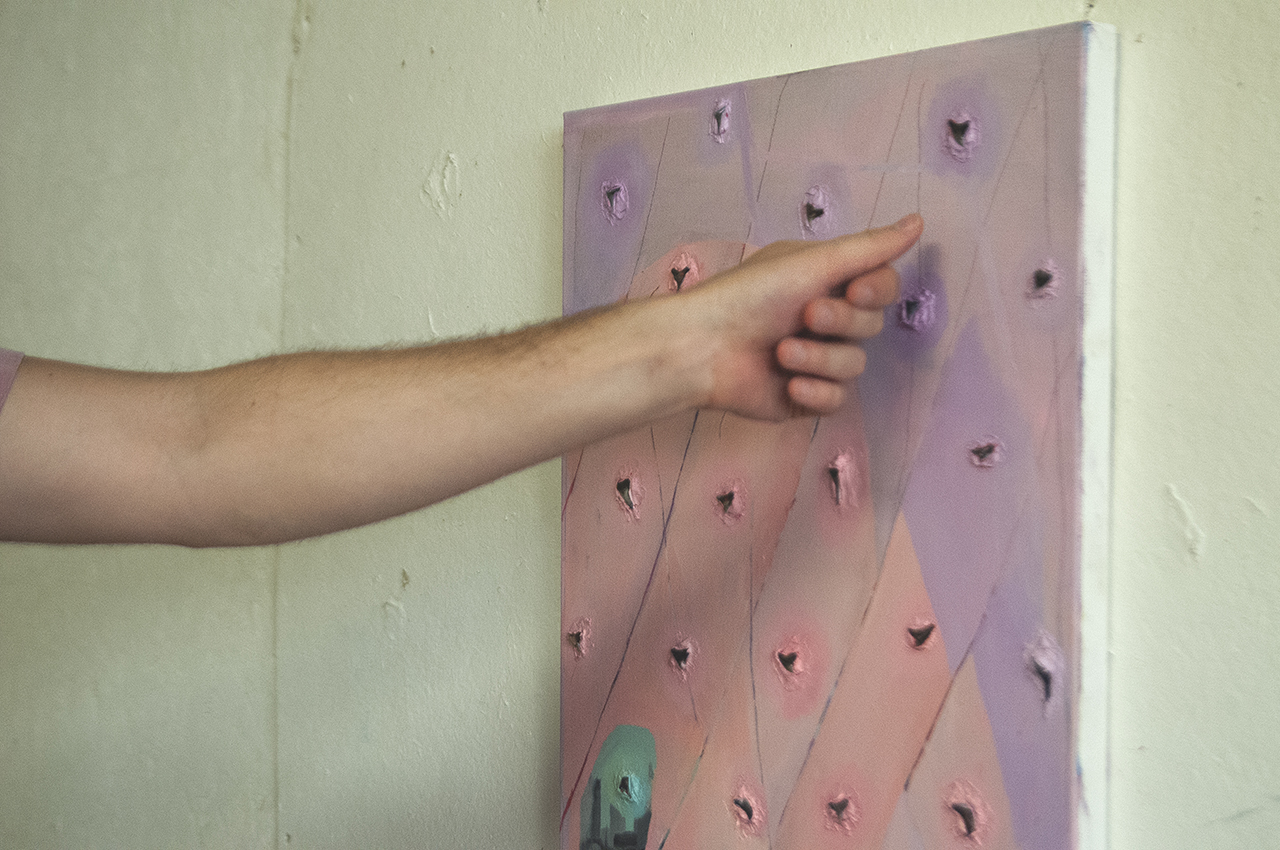
Can you explain your use of layering within your paintings?
I am greedy, so I want everything to be upfront or nothing to be upfront. It depends on how I feel about what I’m seeing. I’m endlessly shuffling versions of the same front page. Sometimes I will wash over a work entirely, but I want there to be a nonhierarchical quality to them. I don’t think they need a headline and then fine print. The headline is the fine print, it is just the work of it, the painting as a behavior.
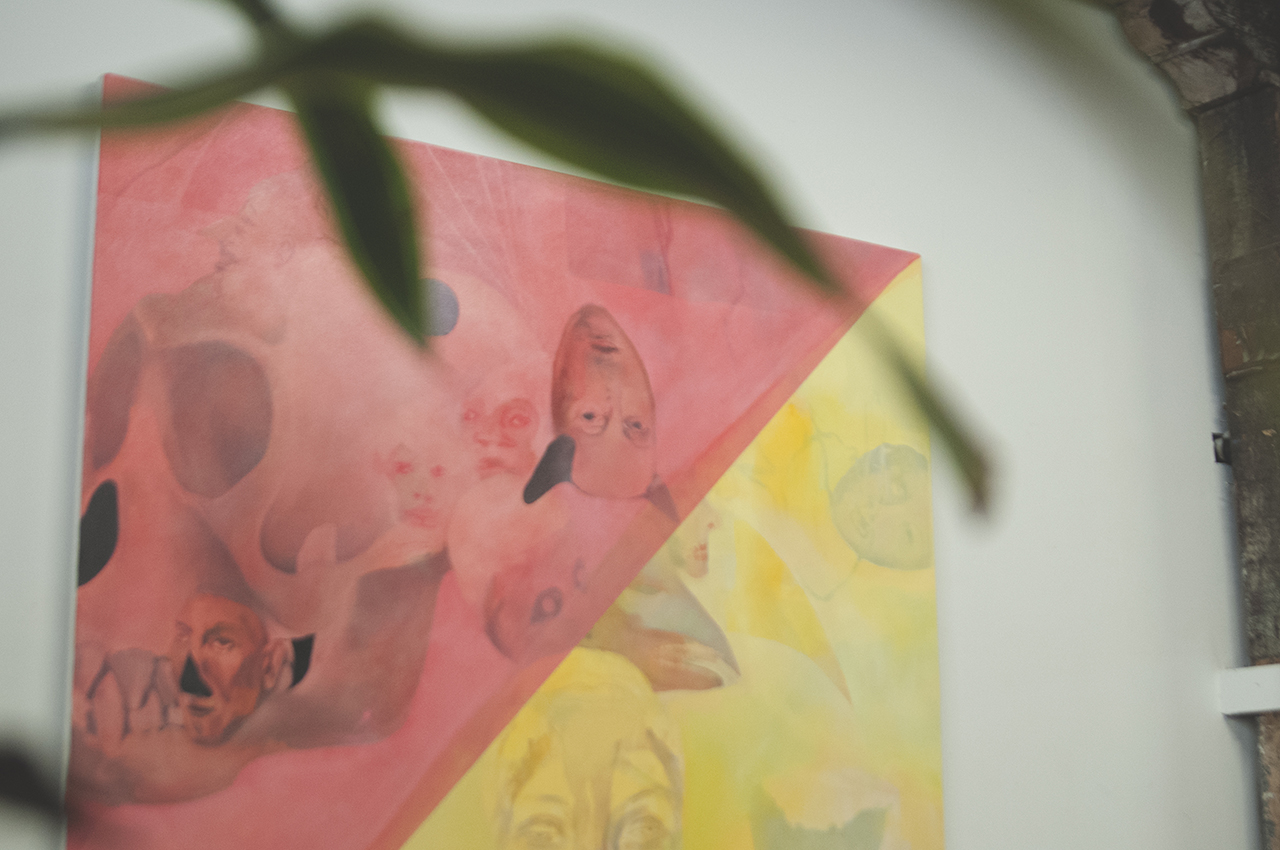
Can you speak about your relationship to painting as a behavior?
I guess the best way to explain this is to read a quote for you from something I recently wrote about this idea:
“The strongest paintings eat well from that which is before them. They spin language, break it, and plunge ahead in their own making. This is not a series of discrete acts or actions; it is a behavior. It is the liminal doing that comes from perception, expectation, and desire, and it finds its way as material and image. Plots, places, agendas, and faces shuffle over each other. Consider the structure of a farce. Farce is a clown-step frenzy and so is my work. It’s movement. The verbing of it is it. Since these paintings are movement, their layers are interleaved and levitating. They are envelopes printed with only return addresses: vistas, jails, gardens, graves, and heads. Inside is an identical envelope that enfolds the outer. Inside is an identical envelope that enfolds the outer. This is an endless encounter that is best understood as behavior.”
